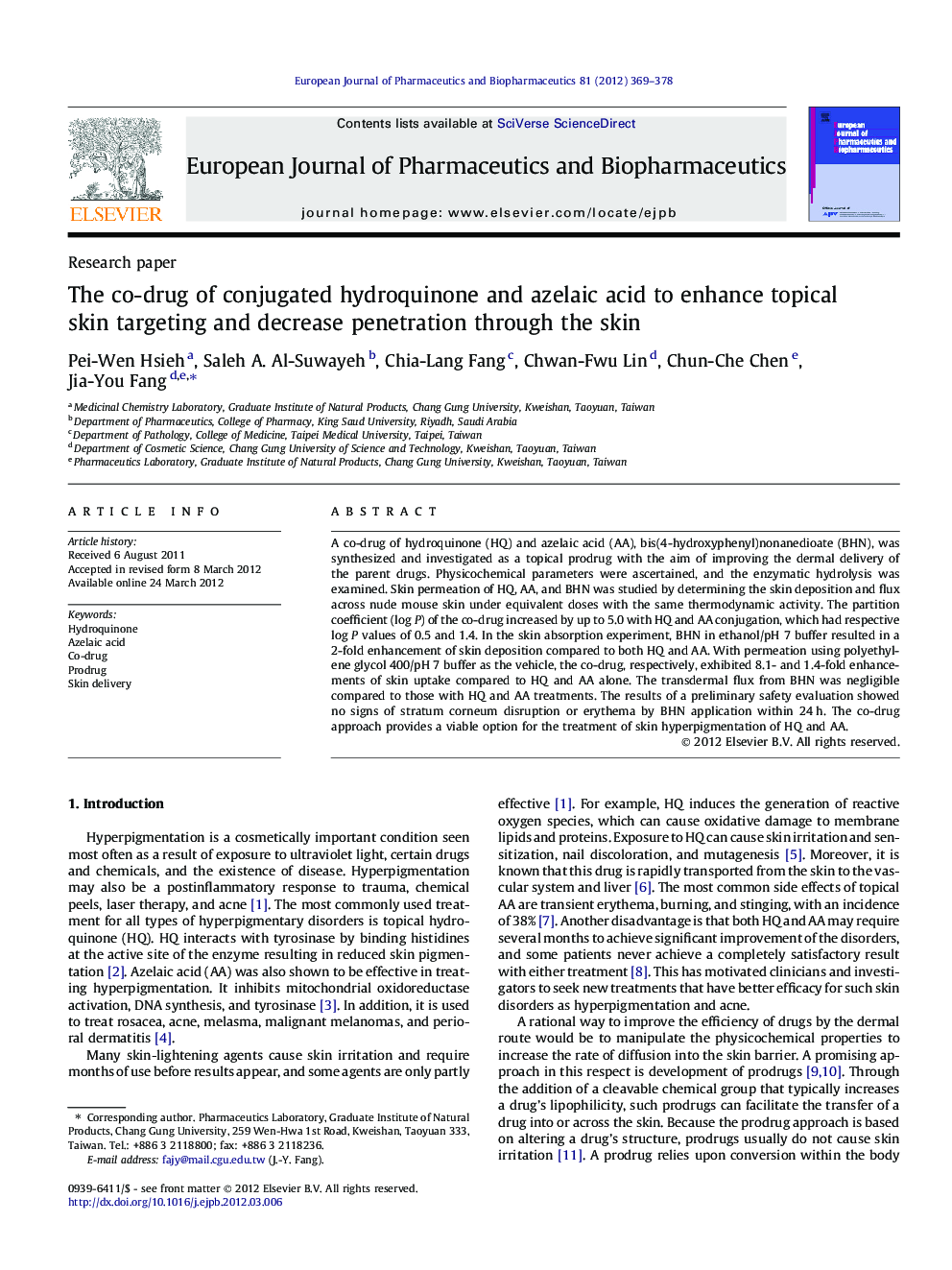| Article ID | Journal | Published Year | Pages | File Type |
|---|---|---|---|---|
| 2085337 | European Journal of Pharmaceutics and Biopharmaceutics | 2012 | 10 Pages |
A co-drug of hydroquinone (HQ) and azelaic acid (AA), bis(4-hydroxyphenyl)nonanedioate (BHN), was synthesized and investigated as a topical prodrug with the aim of improving the dermal delivery of the parent drugs. Physicochemical parameters were ascertained, and the enzymatic hydrolysis was examined. Skin permeation of HQ, AA, and BHN was studied by determining the skin deposition and flux across nude mouse skin under equivalent doses with the same thermodynamic activity. The partition coefficient (log P) of the co-drug increased by up to 5.0 with HQ and AA conjugation, which had respective log P values of 0.5 and 1.4. In the skin absorption experiment, BHN in ethanol/pH 7 buffer resulted in a 2-fold enhancement of skin deposition compared to both HQ and AA. With permeation using polyethylene glycol 400/pH 7 buffer as the vehicle, the co-drug, respectively, exhibited 8.1- and 1.4-fold enhancements of skin uptake compared to HQ and AA alone. The transdermal flux from BHN was negligible compared to those with HQ and AA treatments. The results of a preliminary safety evaluation showed no signs of stratum corneum disruption or erythema by BHN application within 24 h. The co-drug approach provides a viable option for the treatment of skin hyperpigmentation of HQ and AA.
Graphical abstractFigure optionsDownload full-size imageDownload high-quality image (69 K)Download as PowerPoint slide
